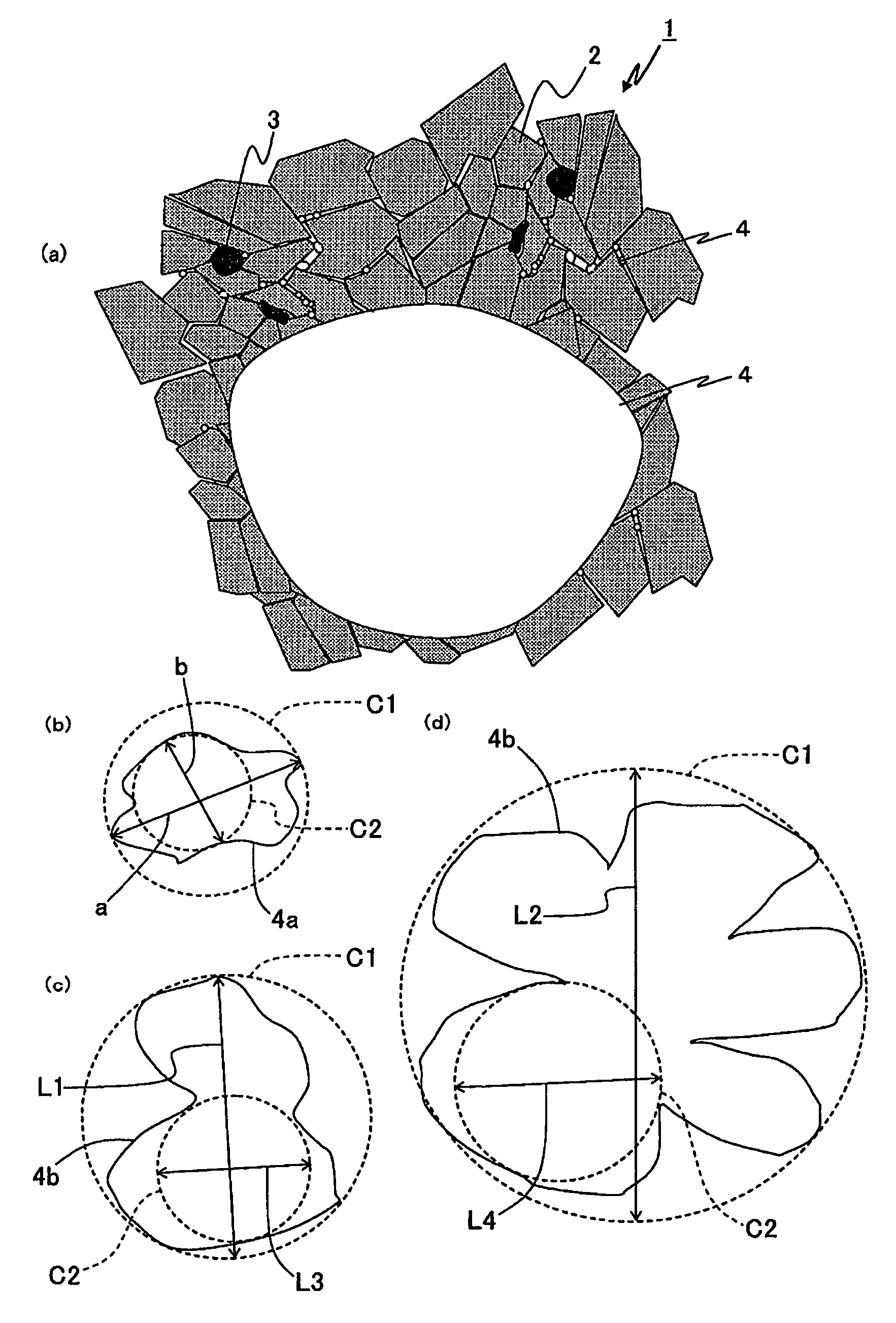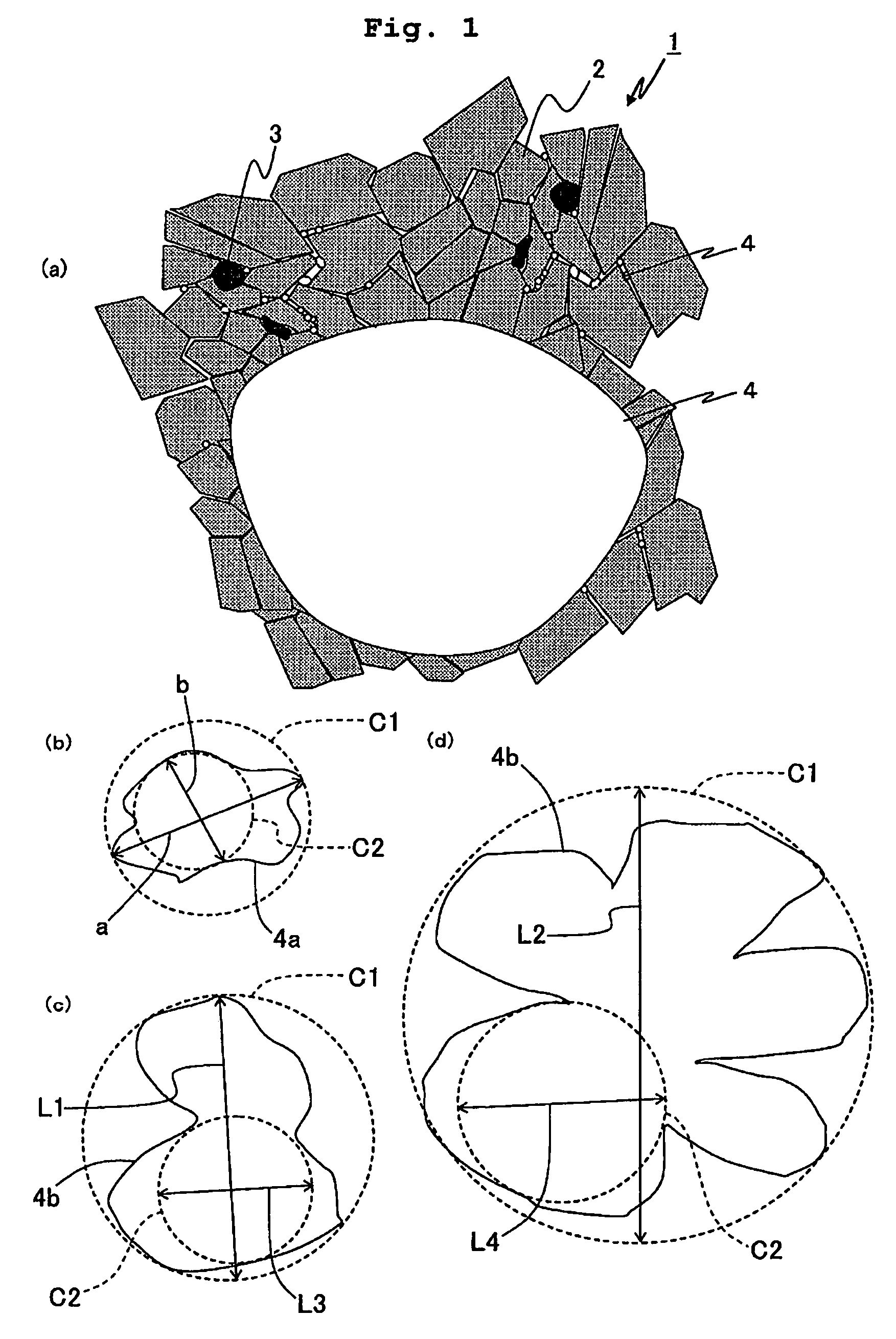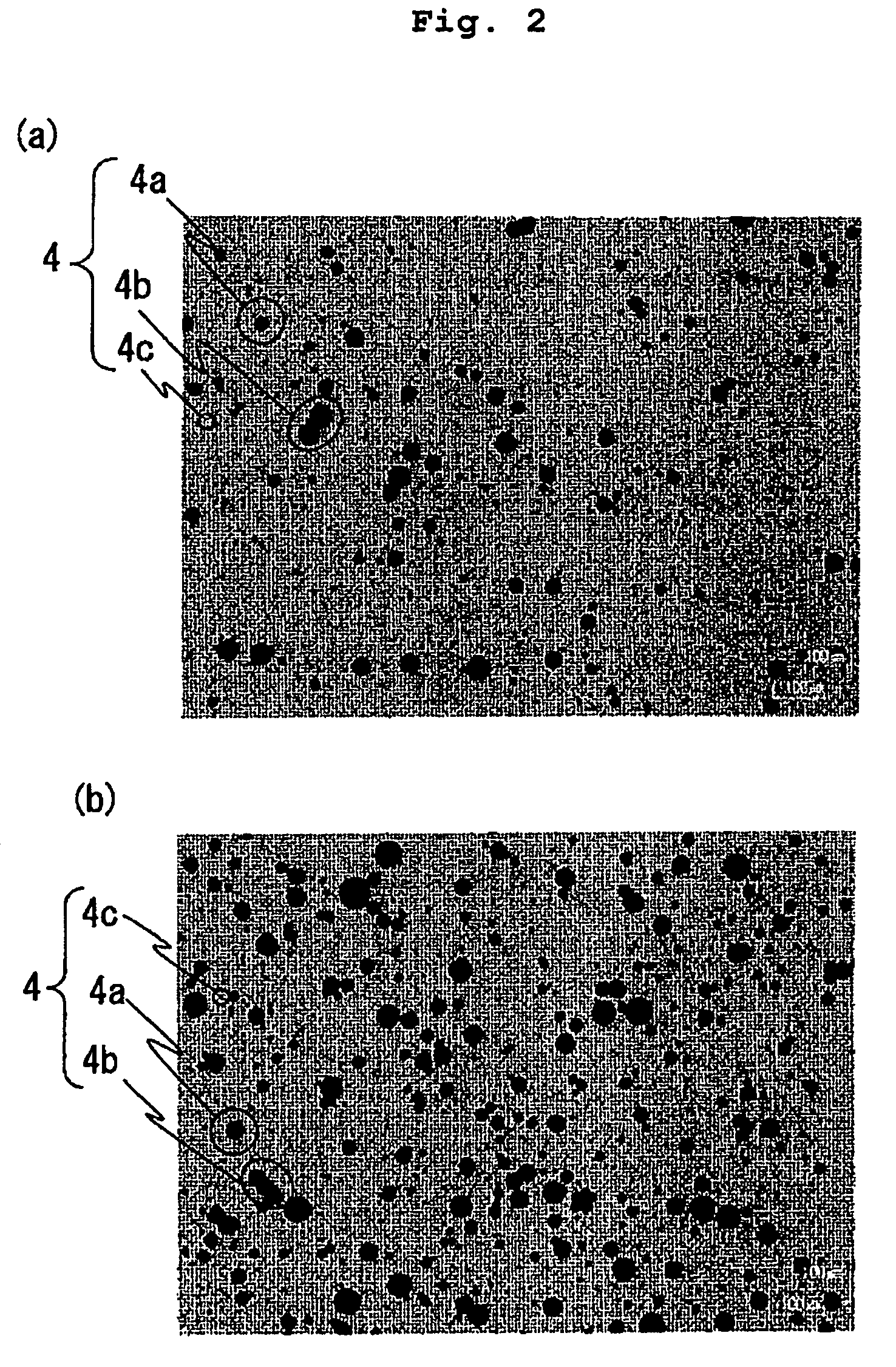Sliding member, manufacturing method thereof, mechanical seal ring using sliding member and mechanical seal using mechanical seal ring
a technology of sliding member and manufacturing method, which is applied in the field of sliding member, can solve the problems of pore forming agent liable to aggregate, seal properties may rapidly deteriorate, etc., and achieve excellent sealing properties, excellent lubricating liquid holding performance, and excellent thermal conductivity
- Summary
- Abstract
- Description
- Claims
- Application Information
AI Technical Summary
Benefits of technology
Problems solved by technology
Method used
Image
Examples
example i
[0103]A predetermined amount of boron carbide powder was added to silicon carbide powder as a main ingredient, and suspension-polymerized non-crosslinked resin beads composed of phenol resin and polystyrene having the maximum diameter shown in Table 1 was added thereto as a pore forming agent. The pore forming agent having a roundness of 4 μm or less and a diameter of 12 to 75 μm was used in each sample. The pore forming agent was added at the ratio shown in Table 1, with respect to 100% by mass of the mixed powder of silicon carbide and boron carbide. Further, as a pore dispersing agent, polycarboxylic acid sodium was added and mixed at the ratio shown in Table 1, with respect to 100% by mass of the pore forming agent, thereby obtaining a raw material.
[0104]The obtained raw material was put into a ball mill and mixed for 48 hours to make slurry. As a molding additive, binder was added and mixed to the slurry, followed by spray drying, thereby obtaining a molding raw material compos...
example ii
[0125]Firstly, boron carbide powder, a pore forming agent, a pore dispersing agent and water, each having the amount of addition shown in Table 2, were added to silicon carbide powder, and put into a ball mill and mixed for 48 hours to make slurry. As a molding additive, binder was added and mixed to the slurry, followed by spray drying, thereby obtaining silicon carbide granules having a mean particle diameter of 80 μm.
[0126]As the above pore forming agent, suspension-polymerized non-crosslinked resin beads composed of previously ground polystyrene were used, which had a roundness of 4 μm or less and a diameter of 12 to 75 μm, and had the maximum diameter shown in Table 2. As the above pore dispersing agent, polycarboxylic acid sodium was used.
[0127]Subsequently, the mixed raw material was charged into a mold, and then pressed and molded at a pressure of 98 MPa in the thickness direction, thereby obtaining a molded body having a predetermined shape. The temperature of the obtained ...
example iii
[0144]Firstly, 2.5% by mass of boron carbide powder, a pore forming agent, a pore dispersing agent and water, each having the amount of addition shown in Table 3, were added to silicon carbide powder, and put into a ball mill and mixed for 48 hours to make slurry. As a molding additive, binder was added and mixed to the slurry, followed by spray drying, thereby preparing silicon carbide granules having a mean particle diameter of 80 μm.
[0145]As the above pore forming agent, suspension-polymerized non-crosslinked resin beads composed of previously ground polystyrene were used, which had a roundness of 4 μm or less and a diameter of 12 to 75 μm, and had the maximum diameter shown in Table 3. As the above pore dispersing agent, polycarboxylic acid sodium was used.
[0146]Subsequently, the mixed raw material was charged into a mold and pressed and molded at a pressure of 98 MPa in the thickness direction, thereby obtaining a molded body having a predetermined shape.
[0147]The temperature o...
PUM
| Property | Measurement | Unit |
|---|---|---|
| pore diameter | aaaaa | aaaaa |
| pore diameter | aaaaa | aaaaa |
| pore diameter | aaaaa | aaaaa |
Abstract
Description
Claims
Application Information
 Login to View More
Login to View More - R&D
- Intellectual Property
- Life Sciences
- Materials
- Tech Scout
- Unparalleled Data Quality
- Higher Quality Content
- 60% Fewer Hallucinations
Browse by: Latest US Patents, China's latest patents, Technical Efficacy Thesaurus, Application Domain, Technology Topic, Popular Technical Reports.
© 2025 PatSnap. All rights reserved.Legal|Privacy policy|Modern Slavery Act Transparency Statement|Sitemap|About US| Contact US: help@patsnap.com



